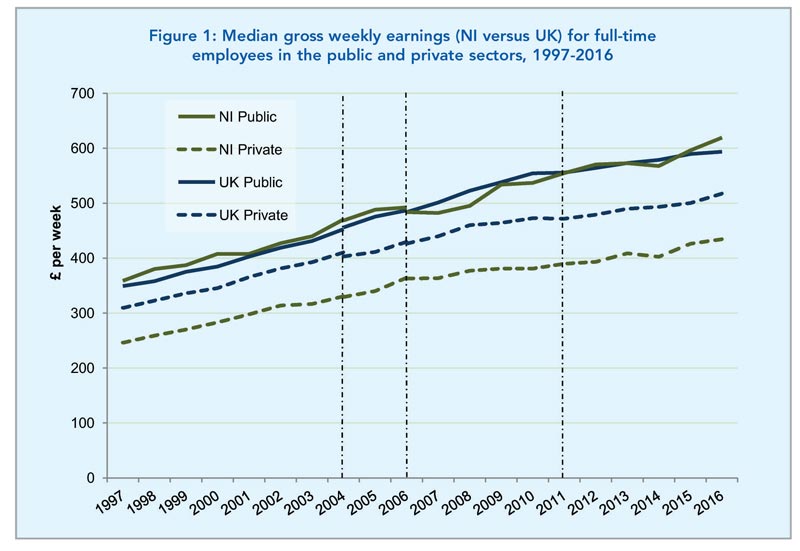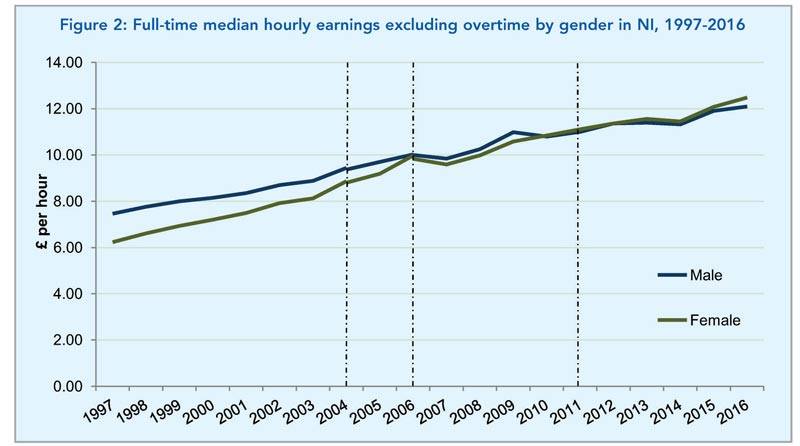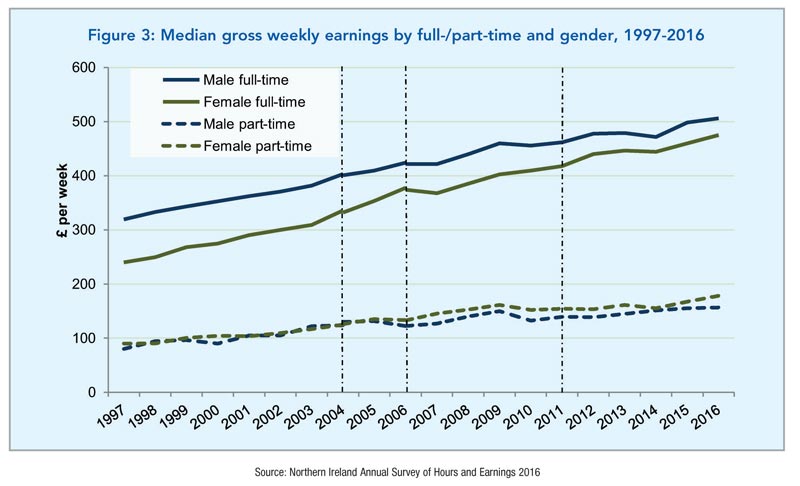Lower paid wage increase


The weekly earnings of full-time employees in Northern Ireland has risen consistently with the rate of the UK and lowest paid workers appear to have benefited from the increase.
Despite a recorded annual rise of Northern Ireland’s earnings, it remains well below the UK average and is the fourth lowest of all 12 UK regions.
The growth in earnings across Northern Ireland up until April 2016 was concentrated largely in lower paid occupations. The largest benefactors of a rise in weekly earnings for full-time employees were largely those industries that earn below the full-time median weekly gross average for Northern Ireland of £495.
Large increases were recorded for process, plant and machine operatives (5.6 per cent to £410) and caring, leisure and other services occupations (4.6 per cent to £316). However, decreases were recorded for elementary occupations (1.3 per cent to £321) and skilled trades occupations (0.3 per cent to £451).
Overall the increase in median gross weekly earnings for full-time employees over the year to April 2016 was 2.2 per cent (inflation was 0.3 per cent over the year), the same as the UK average and a second consecutive annual increase.
The median gross weekly earnings for part-time employees (£172) rose by 5.7 per cent over the year, compared to a 6.6 per cent increase in the UK.


Northern Ireland’s public sector witnessed the greatest increase in full-time median gross weekly earnings over the year of 3.9 per cent compared to only a 1.9 per cent in the private sector. Rises in the public sector have been attributed to a spike in earnings in the human health activities sector (7.8 per cent). However, this was offset by the public administration and defence; compulsory social security sector which includes the Northern Ireland Civil Service that saw no increase over the year.
In the private sector, a growth in the lowest 10 per cent of earnings by 5.8 per cent compared to just 1.2 per cent in the highest 10 per cent could be attributed to the introduction of the National Living Wage.
Gender pay gap
Females in Northern Ireland earned a higher median hourly rates in full and part-time than their male counterparts. The ratio of female to male median hourly earnings (the gender pay gap), excluding overtime, has increased to 90.9 percent, much more aligned than in the UK were the rate is 80.7 per cent.
The full-time hourly earnings for females (£12.48) was greater than the £12.09 rate for males, a constant theme since 2010. Females in part-time work continued to earn more (£8.44) than men (£7.90) an hour. The female to male hourly earning ratio increased to 106.8 per cent, higher than the UK equivalent of 106 per cent.






